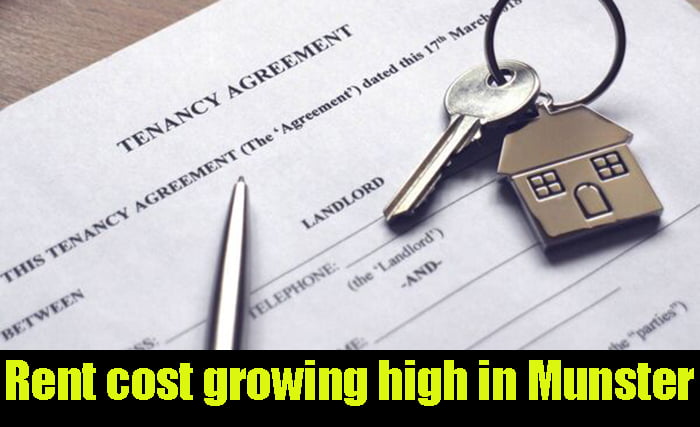According to the latest figures released by Daft.ie, the rent cost in Munster region is still on the rise, whereas the rent price in Dublin have fallen.
Last year there was a 5.2% rise in rents in the Cork city and now the average rent has turned into €1,443. In Munster, in between June and September, the rent rose by an average of 2.1%.
The county areas of Cork reported an average rise of 2.5% in the rents in the third quarter of 2020 when compared to the previous year. The average listed rent here had turned to €1,057.
The rent cost had risen up by 1.2% between June and September, while looking in a national perspective and this rise offsets a fall of 1.4% during the second quarter of the year with relation to the Covid outbreak. Which means that the average nationwide monthly rent in the third quarter of this year was €1,419. This is 1.2% greater compared to the same period last year and 91% higher than its lowest point in late 2011.
Meanwhile in Dublin, the rents remained constant in between the months June to September. There was only a slight rise of 0.2% this time and at the same time it is 0.8% below the same period in 2019.
The biggest increase in rent was in major cities, with the exception of Dublin, and the rest of Leinster.
Rents in Cork, Galway and Waterford are up 5% higher than last year, while rents in Limerick are up 3.4% year-on-year.
In Leinster and Dublin, rents differ from 4% higher in Wexford to 7% in Carlow.
On the other hand, rents are rising in Munster and at the same time they are falling in the Connacht-Ulster region. They are dropping by 1.5% in the last year.
With regards to the report Ronan Lyons, economist at Trinity College Dublin and also the author of the report, put the trends down to supply issues in many areas.
“The figures in this latest rental report highlight the importance of supply in bringing about more affordable rents,” said Mr Lyons.
He said that in Dublin, supply has increased this year, largely due to the impact of Covid-19, and rents are down slightly.
He also added that even in Dublin, availability remains below 2006-2007 levels, a time of rental shortages, and at roughly one third the level of availability seen a decade ago.
Mr Lyons also observed that the respite in Dublin’s rental sector is down to Covid-19, which has brought about a once-off redistribution of a couple of thousand properties from the short-term lettings segment to the long-term rental segment.
“As welcome as these are for those now living in them, they are a finite resource and that, combined with depressed migration into the city, has meant that rents in the third quarter of 2020 were 0.8% lower than a year previously, the first time in almost a decade that rents fell in the capital.” He added.


Comments are closed.